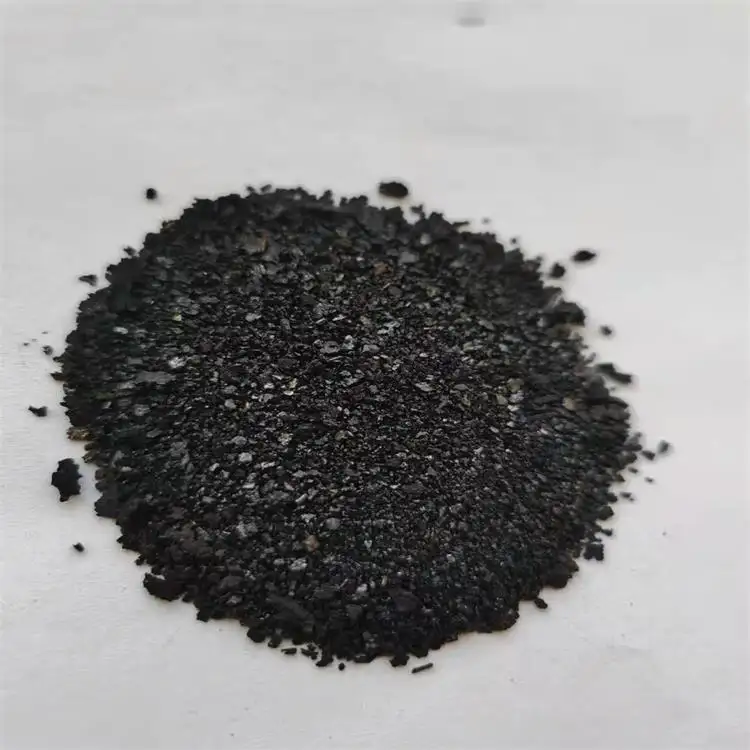Exploring Custom Sulphur Black Dyes for Unique Fabric Solutions and Applications
Custom Sulphur Black Dyes An Overview
The world of textiles has seen significant advancements in dyeing techniques, and one of the most multifaceted categories of dyes is the sulphur black dyes. Known for their deep shades and high durability, these dyes have become increasingly popular in both commercial and custom applications. This article delves into the characteristics, applications, benefits, and considerations of custom sulphur black dyes.
Characteristics of Sulphur Black Dyes
Sulphur black dyes are derived from sulphur-based compounds and are predominantly used for achieving rich, dark colors on textiles. These dyes are unique because they can form complex chemical bonds with the fabric fibers, which not only enhances colorfastness but also contributes to the overall durability of the dye. The shades of sulphur black can range from solid black to variations that incorporate other hues, giving manufacturers flexibility depending on their design goals.
One of the most appealing traits of sulphur black dyes is their solubility in alkaline conditions. This means that they can be readily dissolved and applied in various dyeing processes, such as continuous, batch, and even printing methods. Such versatility makes them ideal for custom dyeing solutions where specific color requirements are paramount.
Applications in Industry
The applications of custom sulphur black dyes are vast and varied. They are primarily used in the dyeing of cotton, linen, and other cellulose fibers. Industries such as fashion, upholstery, and home textiles favor these dyes due to their excellent wash and rub fastness properties, which ensure longevity and maintain the quality of the dyed fabric over time.
Furthermore, custom sulphur black dyes are popular in creating distinctive fashion lines, especially in denim production. Denim manufacturers often use these dyes to produce deep blacks and characterful fading effects that are highly sought after in contemporary fashion trends. The adaptability of sulphur black dyes allows brands to create unique styles that resonate with consumers.
custom sulphur black dyes

Benefits of Custom Solutions
The process of custom dyeing with sulphur black dyes offers numerous benefits. For one, it allows manufacturers to meet specific color demands, ensuring that the final product aligns with brand identity and consumer expectations. Custom solutions can also cater to various fabric types and blend compositions, enhancing the uniqueness of a product line.
Moreover, custom sulphur black dyes can lead to cost-effective production. By tailoring the dyeing process and optimizing the dyeing recipes to suit their specific needs, manufacturers can often reduce wastage and achieve greater efficiency in operations. This customization can lead to significant savings, especially for large-scale productions.
Considerations for Custom Dyeing
While custom sulphur black dyes provide a multitude of advantages, there are critical considerations that manufacturers need to keep in mind. First, the dyeing process requires precise control over conditions such as pH and temperature to ensure optimal results and avoid issues like dye runoff or fading.
Second, it is crucial to consider the environmental impact of sulphur dyes. Some processes could lead to wastewater containing hazardous substances if not managed correctly. Consequently, manufacturers should ensure they comply with environmental regulations and explore sustainable practices, such as using eco-friendly auxiliaries and implementing water treatment systems.
Conclusion
Custom sulphur black dyes stand at the intersection of tradition and innovation in the textile industry. With their ability to deliver deep, vibrant colors coupled with excellent durability, they are a preferred choice for many manufacturers. As the demand for sustainable and unique textile solutions continues to grow, the relevance of custom sulphur black dyes will undoubtedly remain significant, offering endless possibilities for creativity and business growth in the textile sector. By balancing the benefits with thoughtful environmental strategies, brands can continue to thrive while contributing positively to the planet.
-
The Timeless Art of Denim Indigo Dye
NewsJul.01,2025
-
The Rise of Sulfur Dyed Denim
NewsJul.01,2025
-
The Rich Revival of the Best Indigo Dye
NewsJul.01,2025
-
The Enduring Strength of Sulphur Black
NewsJul.01,2025
-
The Ancient Art of Chinese Indigo Dye
NewsJul.01,2025
-
Industry Power of Indigo
NewsJul.01,2025
-
Black Sulfur is Leading the Next Wave
NewsJul.01,2025

Sulphur Black
1.Name: sulphur black; Sulfur Black; Sulphur Black 1;
2.Structure formula:
3.Molecule formula: C6H4N2O5
4.CAS No.: 1326-82-5
5.HS code: 32041911
6.Product specification:Appearance:black phosphorus flakes; black liquid

Bromo Indigo; Vat Bromo-Indigo; C.I.Vat Blue 5
1.Name: Bromo indigo; Vat bromo-indigo; C.I.Vat blue 5;
2.Structure formula:
3.Molecule formula: C16H6Br4N2O2
4.CAS No.: 2475-31-2
5.HS code: 3204151000 6.Major usage and instruction: Be mainly used to dye cotton fabrics.

Indigo Blue Vat Blue
1.Name: indigo blue,vat blue 1,
2.Structure formula:
3.Molecule formula: C16H10N2O2
4.. CAS No.: 482-89-3
5.Molecule weight: 262.62
6.HS code: 3204151000
7.Major usage and instruction: Be mainly used to dye cotton fabrics.

